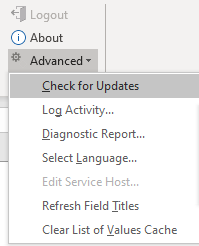2 Install Oracle Visual Builder Add-in for Excel
To install Oracle Visual Builder Add-in for Excel, download the Current User installer (vbafe-installer.exe) from the Oracle Downloads page and run the wizard.
You don’t need elevated privileges to install the add-in. However, if your system is missing required software, the installer will launch the required Microsoft Installers to install the missing components. These installers may require elevated privileges. Contact your network administrator for assistance if required.
Make sure that the proxy settings for Internet Explorer are configured to allow access to "*.microsoft.com". The installer may need to access Microsoft's website to download missing components.
This installation is specific to the current Windows user profile. If multiple users on a Windows machine need the add-in, each of them must log in to their profile and run the installer in order to use the add-in.
Note:
Refer to the Installation section in the Developing Integrated Spreadsheets Using Oracle Visual Builder Add-in for Excel for more information.Check for Updates
It's a good idea to periodically check whether a newer version of the add-in is available for you to install. The latest version of the add-in is posted to the Downloads page.
- From the Advanced drop-down in your existing installation, select Check for Updates.

Description of the illustration check-updates.png - If a newer version is available, when prompted to open the downloads page in your browser, click Yes.
- Download the installer for the latest version, then install the update. Before you update, be sure to review best practices as described in the next section.
Upgrade to the Latest Version
To take advantage of all the latest Oracle Visual Builder Add-in for Excel features, make sure you are running an up-to-date version of the add-in. To upgrade to a new version, simply download and run the installer.
You do not need to uninstall the previous version unless the installer instructs you to do so.
To ensure a clean upgrade, follow these instructions when upgrading your installation.
- Before you upgrade the add-in:
- Upload any pending changes using the current add-in version.
- Save changes in open workbooks, then close Excel.
- Run the installer for the new version and follow the instructions in the wizard. The installer automatically replaces the previous version with the new version.
- After you upgrade:
- Launch Excel to complete any final installation steps.
- Open your integrated workbook.
- Clear any layouts of old data and download data again as required.

